Mangalore: Ancient Burial Rites - Something to Learn from the Urn
Richard Lasrado
Source - http://mangalorean.com/news.php?newstype=broadcast&broadcastid=228923
Evidence of a prehistoric burial custom of interring dead persons in earthen pots has been found in various parts of India, mostly in Tamil Nadu.
In a prominent instance, they were found in a farm near Kuvalakarai village when the land was being dug a few years ago. Villagers had found some very fragile skeletal bone pieces. Kuvalakarai village is near another archaeologically significant site, Girivalamvandha Nallur, where a large treasure of Roman and Chinese coins and medallions was discovered some years ago.
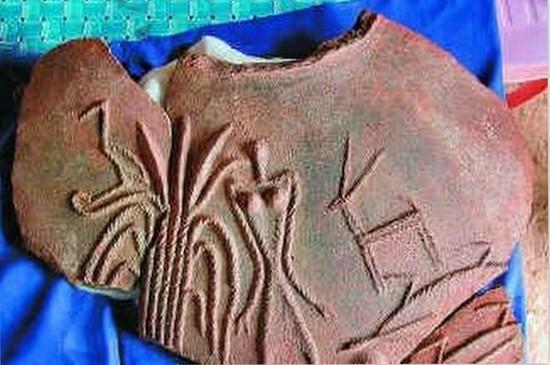
Such Stone Age pieces of evidence were also found as part of a large burial ground at Adichanallur, near Tirunelveli, also in Tamil Nadu. Archaeology department officials say it was common for burial urns to contain smaller earthen pots of grain and food kept there when the dead were interred. The practice was linked to a strong belief in life after death because Neolithic man believed in the concept of the spirit surviving a mans death, they say further.
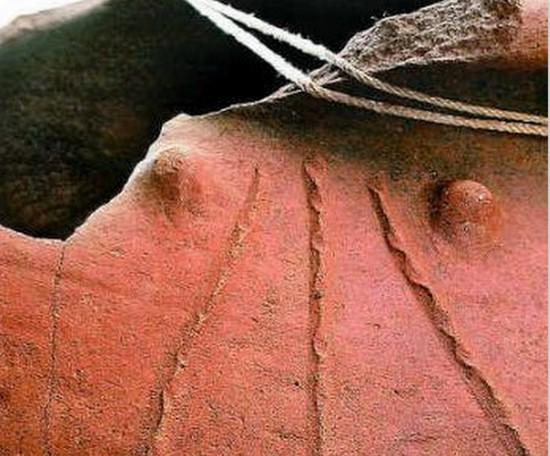
The above two pics are of those found in Tamil Nadu
Archaeologist K S Ramachandran, who had served for many years with the Archaeological Survey of India, is of the opinion that these monuments displaying the mode of disposal of the dead and the furnishings within these burials are known to archaeologists as Megaliths, on account of the use of huge stones involved in the construction of these graves.
Megalithic graves are scattered in peninsular India and there is a heavy concentration of these in Tamil Nadu, urn burials being one category of such monuments, says Ramachandran.
The extensive urn burial site at Adichchanallur in Tuticorin district (formerly Tirunelveli) was first discovered by Dr. Jagor of Berlin Museum in 1876. A Rea excavated a good number of urns during 1910s and discovered gold diadems with parallels from Mycenae; bronze objects, notably lids with exquisite finials depicting many animal forms, iron objects besides thousands of potsherds. The excavation was resumed during 2003-04 and 2004-05. More than 160 urns within the area of 600 square metres have been exposed.
A five-foot-high burial urn dating to the Megalithic period (300 BC to 100 AD) and containing teeth and some other articles was unearthed by construction workers at a village in 2010.
The urn was found at a depth of about eight feet at the backyard of a house at Thillayadi village and contained pieces of teeth and some articles commonly used by soldiers.
In Coastal Karnataka too
Prof T Murugeshi, lecturer in Archaelogy at Mulki Sunder Ram Shetty College, Shirva in Udupi district says the custom was prevalent in the coastal district also. Only two prominent cases have come to light, whereas a good many in number might have been levelled and gone underground during real estate development and urbanization process.
Prof Murugeshi says that the Megalithic culture or Iron Age culture was a dominant culture of South India and in Karnataka too, it was widespread. It was known by their diverse forms of burials in India and elsewhere in the world. The southern west coast in south India comprises the Maalbar and theKonkan. In between these two, a small tract of coastal belt is known as west coast of Karnataka.
"It was formed of three districts South Canara, Udupi and North Canara. From a prehistorical perspective, this region is much less-known until recently. However, It was Dr P Gururaj Bhat who brought to light megalithic Dolmens and rock-cut caves of coastal Karnataka and was the first to include the region in the study of Megalithic sites in India," says he.
He further substantiates that subsequently an urn burial site at Birumale near Puttur was discovered by Dr A Sundara and another by himself (Prof Murugeshi) at Baggeyarkar near Shirva. Besides the Dolmens, rock-cut caves and urn burials, another new type of Megalithic burial called Menhirs was discovered and included by Prof Murugeshi.
Habitational sites of megalithic people are very less known but their burials known by thousands, which factor clearly indicates that the people had very strong belief in life after death.
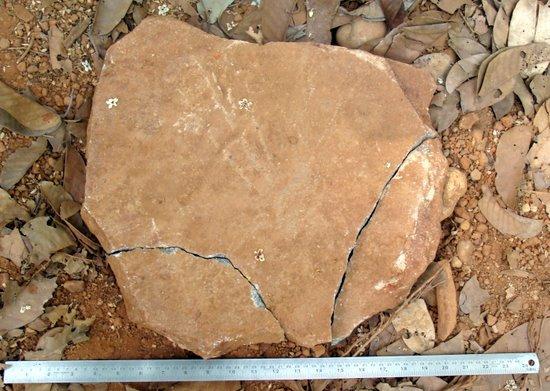
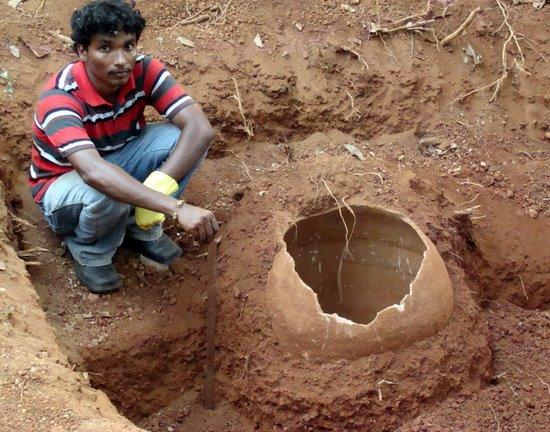
The Hebri site which Murugeshi and his team recently studied accidentally came to light while a new bypass to Hebri town was being constructed near Ardhanarishwara temple at Tana. But before his spot inspection to know its significance, it had been disturbed and supposed to have been robbed. Then, a rescue operation was conducted to recover the available antiquities and their cultural mode with the help of Hebri police station and local people, Prof Murugeshi recalls.
The unbaked and sun-dried pot about 3 feet in height was placed in a pit and covered by a granite cap-stone. It had a thick rim of 6-inch diameter and a globular body about 63 inches in diameter. It is locally known as Gurke in Tulu dailect and has a flat round base. It was placed two feet below the subsurface.
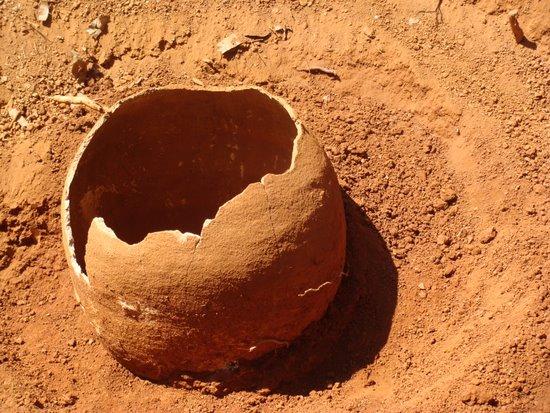
The last three pics are of the discovery made in Hebri
By scraping, the following observations were made by Prof Murugeshi at the site.
- The pot was firmly placed in a pit with accurate water level.
- The pot has turned very brittle after absorbing the water around over the past thousands of years.
- The pot had finger-press ornamentation on the surface.
- The pot had symbolic female identity by two bulbous marks.
- The belief of life after the death confirmed by using handmade unbaked and sun-dried pot for burial purpose.
- The pot was made by rings instead of wheel made, which we call constructive method.
- Seven rings are used with rim and base totalling nine which number had special significance in Indian culture.
In conclusion, he says that the urn symbolically represents that death is not an end of life but beginning of a new life which is the essence of Upanishad thought.
Prof Murugeshi gratefully recalls the assistance and kind help received from his friends and acquaintances Yogish Bhat, Sukumar, Pandu Naik, police sub inspector of Hebri, Sridhar Bhat and Krishnayya of Udupi, driver Ravi Alva and Raghavendra Amin.